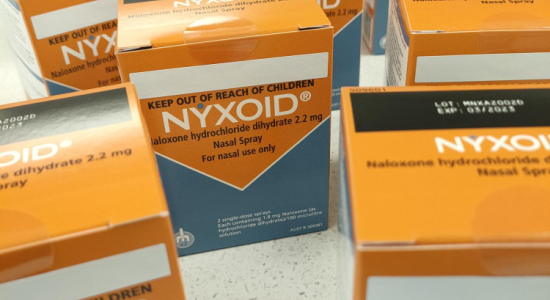Portugal: putting health and welfare at the centre of drug policy

With solid evidence showing punitive approaches to drugs do not work, the question that arises is what to do instead? In this first instalment of a Matters of Substance series on innovative drug policies in different countries, we look at Portugal – the small European country heralded as having a particularly successful drug harm-reduction approach.
The problem
Portugal’s drug policy reforms stemmed from past concerns about it having one of the worst drug problems in Europe, notably a heroin epidemic. Reports revealed almost 1 percent of the population suffered from drug dependency in 1999, and a new approach was needed.
The new policy model
In 2001, Portugal both decriminalised minor drug offences for all drugs and significantly scaled up public health and social support activities under a five pillar model of prevention, drug use dissuasion, harm reduction, treatment and reintegration.
Drug offences approach
- Minor drug use/possession offences (up to 10 days personal supply) for all drugs are decriminalised but remain civil offences.
- Drugs are confiscated and offenders appear before regional panels – Commissions for the Dissuasion of Drug Addiction (CDTs).
- The CDT panels:
- comprise three people: a medical professional, a social worker and a lawyer
- evaluate the drug user’s personal situation – if addicted, they are encouraged into treatment; if a recreational user, advice is given about physical, social and psychological health to discourage use
- assess whether the offender has any broader health or social issues, such as mental health, school, employment or housing, and can refer to support agencies
- can also impose a wide range of sanctions like community service or fines – but for non-dependent first-time offenders, almost always suspend proceedings and impose no sanction.
Public health and social support
Portugal’s drug policies were refocused on a public health model with significant state financial investment in drug harm- reduction activities. These included:
- expansion of needle and syringe exchange programs and low- threshold opiate substitution treatment
- free hepatitis B vaccinations
- better co-ordinated and bolstered drop-in centres and shelters
- mobile health and outpatient treatment units
- provision of drug outreach workers
- housing and subsidised employment initiatives
- drug checking programmes.
The results
Overall, while Portugal’s drug use rates went up and down after its reforms, they were followed by dramatic reductions in drug-related harms, increased social inclusion and significantly reduced social costs. Since the new approach, changes include:
- less illicit drug use in the general population – Portugal’s level of drug use remains generally below the European average
- more cannabis use in adolescents – but this is in line with very similar trends in other European countries like Spain, Italy and notably Poland, which has very different, more punitive policies
- significantly fewer drug-related deaths
- a steady drop in problematic drug user numbers
- strong increases in numbers of drug-dependent individuals accessing treatment
- reductions in transmission of drug use-related infectious diseases
- dramatically fewer drug offenders in the criminal justice system
- reduced stigmatisation
- more focus on major trafficking and increased amounts of drugs seized.
The numbers
4.5
Deaths per million drug-induced mortality rate (2014) among 15–64-year-olds. By contrast, the most recent European average is four times higher at 19.2 deaths per million.40%
Decrease in injecting drug use 2007–2012 (estimate).97%
Decrease in new HIV cases through intravenous drug use, down from 1,482 in 2000 to 40 in 2014.16%
Past-year cannabis use rates more than doubled amongst 15–16-year-olds, up from 8 percent in 1999 to 16 percent in 2011.29
New outpatient treatment units, up from 50 in 2000 to 79 in 2009.10%
Decrease in problematic drug users – numbers reduced from 7.6 to 6.8 per 1,000 population aged 15–64 years between 2000 and 2005 (estimate).18%
Reduction in drug-related social costs over the first 10 years of reforms. Figure includes health and legal costs and avoidance of lost income and lost production.5000
Criminal drug offences dropped from about 14,000 per year in 2000 to an average of 5,000–5,500 per year after decriminalisation.44%
In 1999, 44 percent of prisoners were incarcerated for drug offences – by 2013, that had halved to 24 percent.500%
Increase in the amount of drugs seized between 1995–99 and 2000–04.Sources
Zeeshan Aleem, ‘14 Years After Decriminalising All Drugs, Here’s What Portugal Looks Like’, Policy.Mic
Niamh Eastwood, Edward Fox and Ari Rosmarin, ‘A Quiet Revolution: Drug Decriminalisation Across The Globe’
European Monitoring Centre for Drugs and Drug Addiction (EMCDDA), ‘Statistical Bulletin 2016’ EMCDDA
Johann Hari, Chasing the Scream (United Kingdom: Bloomsbury, 2015).
Caitlin Hughes and Alex Stevens, ‘Decriminalisation and public health: the Portuguese approach to drug policy’, Academia
Caitlin Hughes and Alex Stevens, ‘A resounding success or a disastrous failure: Re-examining the interpretation of evidence on the Portuguese decriminalisation of illicit drugs’, University of Kent
SICAD, ‘Annual Report 2013: The country's situation on drug matters and drug addiction’, SICAD, (2014),
United Nations Commission on Narcotic Drugs, ‘Side event: A public health approach for drug policy: The Portuguese case’, CND Blog
Recent news

Beyond the bottle: Paddy, Guyon, and Lotta on life after alcohol
Well-known NZers share what it's like to live without alcohol in a culture that celebrates it at every turn

Funding boost and significant shift needed for health-based approach to drugs
A new paper sets out the Drug Foundation's vision for a health-based approach to drug harm

Expert Pharmac committee recommends funding for overdose reversal nasal spray
The expert committee has said funding for naloxone in the community should be a high priority

